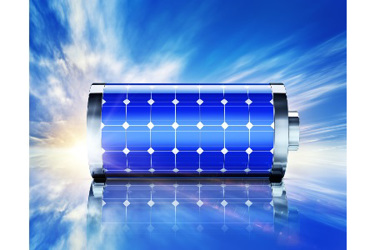Solar Batteries Have Become Critical Resilience Measure For Treatment Plants


As blackouts caused by extreme weather become more common around the country, critical infrastructure will need to be more prepared than ever. For drinking water and wastewater treatment operations, this means turning to the sun.
“Blackouts are becoming increasingly common as extreme weather causes electricity demand to skyrocket, while simultaneously damaging the aging electricity grid,” NPR explained. “So, some communities are looking for new ways to ensure that vulnerable people and infrastructure can withstand power outages. They’re installing solar panels and large batteries to create tiny ‘microgrids’ that continue to work when the larger grid goes dark.”
When water service for more than 11.8 million people across Texas was disrupted due to winter conditions last month, a wakeup call for drinking water and wastewater systems around the country was issued.
“The extent of the blackouts in Texas took many people off-guard, even energy experts living there,” per NPR. “In the wake of the damage, millions of Texans spent more than a week without drinkable water. Water infrastructure, like the treatment plants for drinking water and wastewater, need electricity to operate.”
It was a lesson that was learned by many Northeastern facilities following Superstorm Sandy, which caused a major blackout impacting many wastewater treatment plants. The backup generators at these plants rarely held up against the flooding and billions of gallons of raw sewage was released into source water.
“[Electric utility] PSE&G installed solar panels at a wastewater treatment plant in Caldwell, New Jersey, as well as a very large battery,” NPR reported. “The solar panels generate electricity for the local grid, but in the event of a storm, they help keep the plant running by supplying the plant during the day and helping to charge the batteries that can provide electricity when the sun goes down. Between the battery and the backup generator, the wastewater plant can run for several weeks on its own.”
Even though the need for resilient power at drinking water and wastewater treatment plants is growing more apparent, solar energy is not a miracle fix. It does require a significant financial investment. For instance, the money needed by a Wisconsin utility currently considering a solar array is substantial.
“A solar array … would provide about 40% of the power to the facility,” WSAW reported. “A solar array of that size would cost an estimated $1.5 million. A larger array could provide 90% of the facility power, but more land would be needed. A larger array could cost $3.5 million.”
To read more about how drinking water and wastewater utilities prepare for extreme weather, visit Water Online’s Resiliency Solutions Center.
